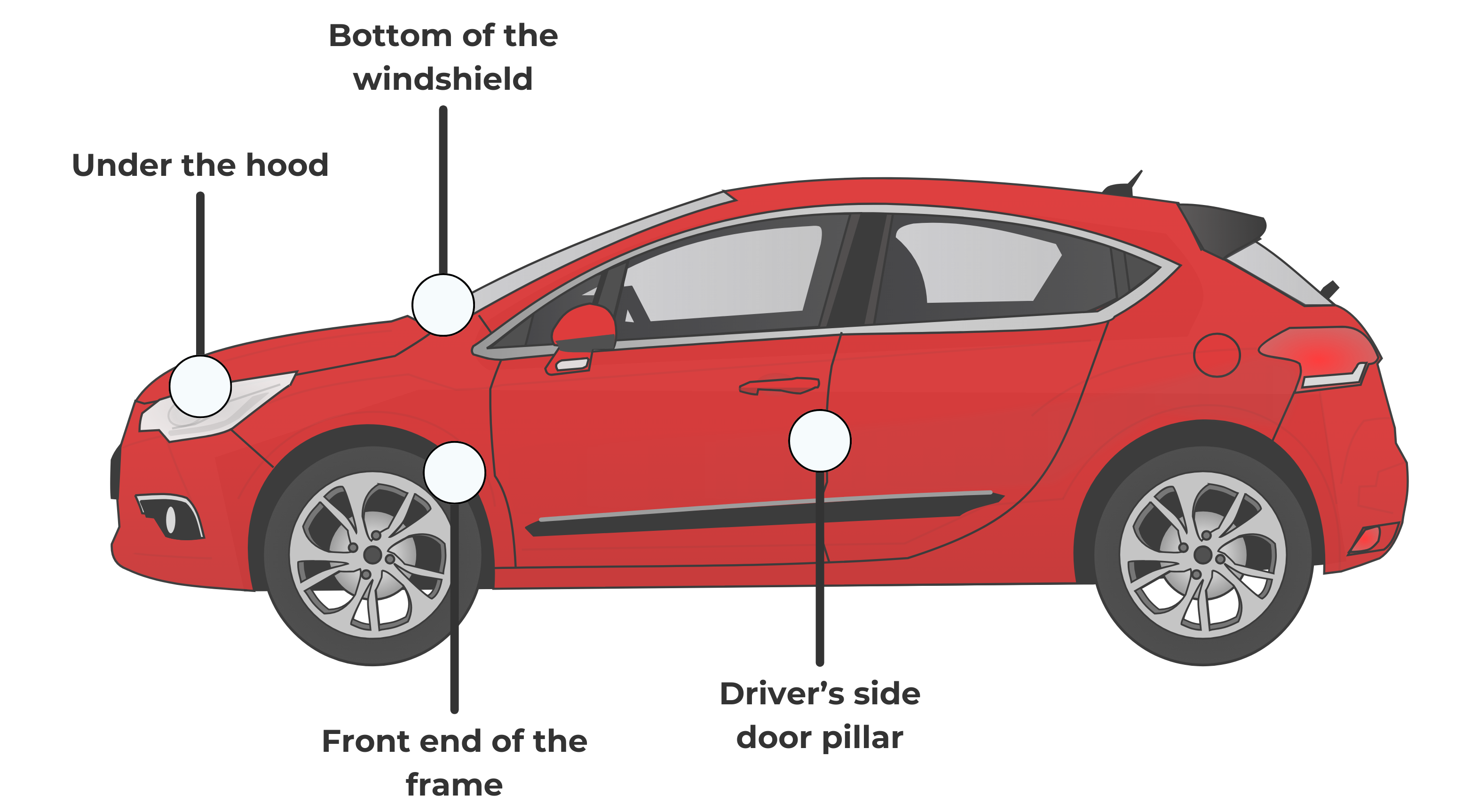
Buying a car is a big deal. You want to know more than just the price or how many miles it has. You also need to know the story behind the vehicle—and the VIN number helps you do exactly that. That sounds complicated, but don’t worry—it’s easier than it seems.
Ready to dive deeper with VIN decoding? Let’s get started. You can decode your VIN here right here using our free VIN decoder tool.
In this guide, you’ll learn how to read each part of the VIN, one step at a time. You’ll also see how this number helps you find out if the car has been in any accidents, had a recall, or changed owners in the past.
What is a VIN Number?
A VIN, short for Vehicle Identification Number, is a special 17-character code made up of letters and numbers. Every car, truck, or motorcycle made after 1981 gets its own VIN number when it’s built. This code helps people quickly identify and track a vehicle.
Once a vehicle gets its VIN, it keeps that code forever. The number doesn’t change, even if someone paints the car a new color, sells it to another owner, or installs new parts. That’s why the VIN plays such an important role when buying or selling a used car.
If you want to decode this VIN and unlock its full story, all you need is a trusted VIN number decoder.
Where Can You Find Your VIN?
Before you can decode VIN, you’ll need to locate it. Here are the most common places to check:

- Dashboard (driver’s side): Look through the windshield at the base of the dashboard.
- Driver’s side door frame: Check the label or sticker inside the door jamb.
- Vehicle registration and title documents
- Insurance card or policy
- Engine bay or firewall (on older vehicles)
Once you have the number, you can start decoding VIN numbers in seconds.
VIN Number Format: What Each Section Means
A 17-character VIN is structured into three main sections:

1. World Manufacturer Identifier (WMI) – Digits 1-3
These first three characters identify the manufacturer and the country of origin:
- 1, 4, 5 = USA
- 2 = Canada
- 3 = Mexico
- J = Japan
- K = South Korea
- W = Germany
- Z = Italy
The second and third characters in the VIN typically represent the manufacturer (e.g., “HG” for Honda, “FA” for Ford Argentina) and sometimes the vehicle type or division—such as “GM” for General Motors passenger cars, “TR” for Toyota trucks, or “CA” for Chrysler minivans.
2. Vehicle Descriptor Section (VDS) – Digits 4-9
This part describes the vehicle’s features such as:
- Body style
- Engine type
- Transmission
- Restraint system
- Series or trim level
The 9th digit is particularly important—it’s the VIN check digit, used to verify the authenticity of the VIN. If a VIN fails this check, it may be fake or tampered with.
3. Vehicle Identifier Section (VIS) – Digits 10-17
The final 8 digits reveal the vehicle’s production year, plant, and unique serial number.
Key Details:
- 10th digit = Model Year
- 11th digit = Manufacturing Plant
- Digits 12–17 = Serial number
Why You Should Learn How to Read a VIN Number
Learning how to decode a VIN number isn’t just for car experts. It’s a powerful tool that helps you make smarter choices when dealing with cars. Here’s how it helps:
When buying a used car, you can check important details like the model year, engine type, and where the vehicle was made. This helps you avoid surprises and know exactly what you’re paying for.
Before signing up for insurance or registering your car, make sure the VIN matches the vehicle’s real details. That way, you avoid mistakes that could cause problems later.
If you’re worried about safety, a quick VIN check can tell you if the vehicle has any recalls. You’ll know right away if something needs to be fixed by the manufacturer.
Trying to avoid scams? A VIN check helps you spot fake or cloned vehicles. You’ll see if the car has been tampered with or if it’s pretending to be something it’s not.
Most importantly, a decoded VIN opens the door to a vehicle history by VIN. You’ll see records of past accidents, title problems like salvage or flood damage, and signs of odometer rollbacks. This kind of information protects you from making a bad purchase.
To get started, use our free vehicle VIN decoder. It’s quick, easy, and gives you answers that matter.
Common Mistakes When Reading VIN Numbers
It’s easy to make small mistakes when reading or typing a VIN in car VIN decoders. These simple errors can lead to big problems, like getting the wrong vehicle history or missing out on important details. Here are some common issues to avoid:
✅ Mixing up letters and numbers
Some characters look very similar. For example, the letters I, O, and Q are never used in any VIN. That’s because they can be confused with the numbers 1 and 0. Always double-check what you see.
✅ Using only part of the VIN
A full VIN has exactly 17 characters. Not 16. Not 18. Anything shorter or longer is not a real VIN and won’t work in a VIN decoder. Make sure you include the whole number from start to finish.
✅ Grabbing the VIN from the wrong place
Sometimes people copy the VIN from an online ad or a sales listing. However, these can contain typos or outdated info. Instead, get the VIN directly from your vehicle. You can find it on the dashboard, driver-side door frame, or your car title.
FAQ: How to Read a VIN Number
Is there a way to check what options my car came with using the VIN?
Yes! A decoded VIN can reveal factory-installed options and trim level—especially when paired with a VIN decoder free tool like ours.
Can I tell if a car was in an accident from the VIN?
Not directly—but once you decode it, you can access reports that include accident history, title status, and more.
What if the VIN is only 11 or 13 digits?
Vehicles built before 1981 may have shorter VINs. These aren’t compatible with modern systems and must be decoded using older charts for decoding VIN numbers.
Don’t Just Buy—Buy Smart
Here’s the truth: Every car has a secret code called a VIN—short for Vehicle Identification Number. When you decode it, you unlock the car’s full backstory. You’ll find out where it was built, what parts it has, and if anything’s wrong with it.
Sounds tricky? Not at all. You don’t need to be a mechanic or spend hours with a chart. Just enter the VIN into our free tool. In seconds, you’ll see everything you need to know—clear, simple, and stress-free.
👉 Before you buy a used car, take one quick step: Decode the VIN. It’s fast. It’s free. And it could help you avoid a bad deal or even a scam.